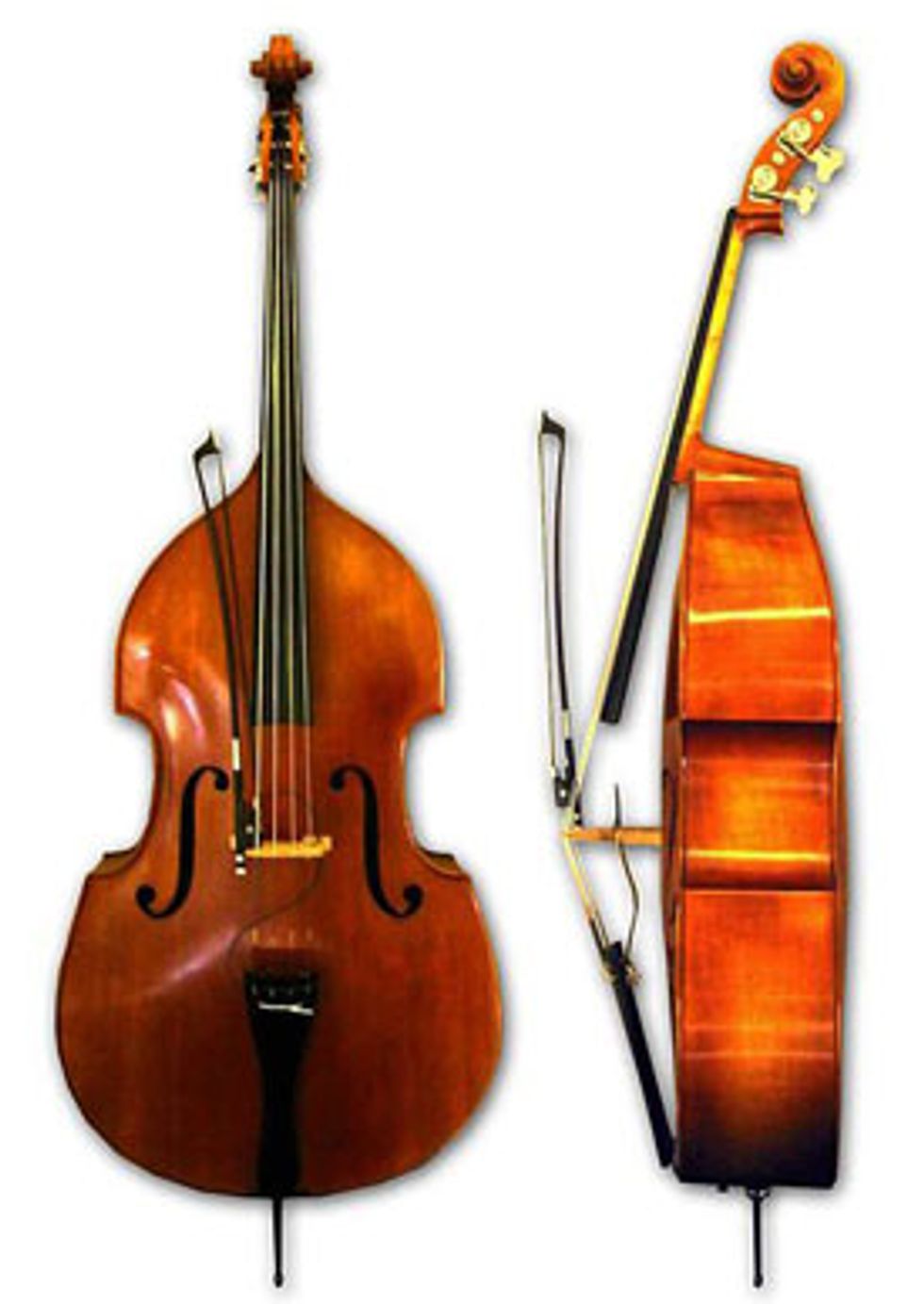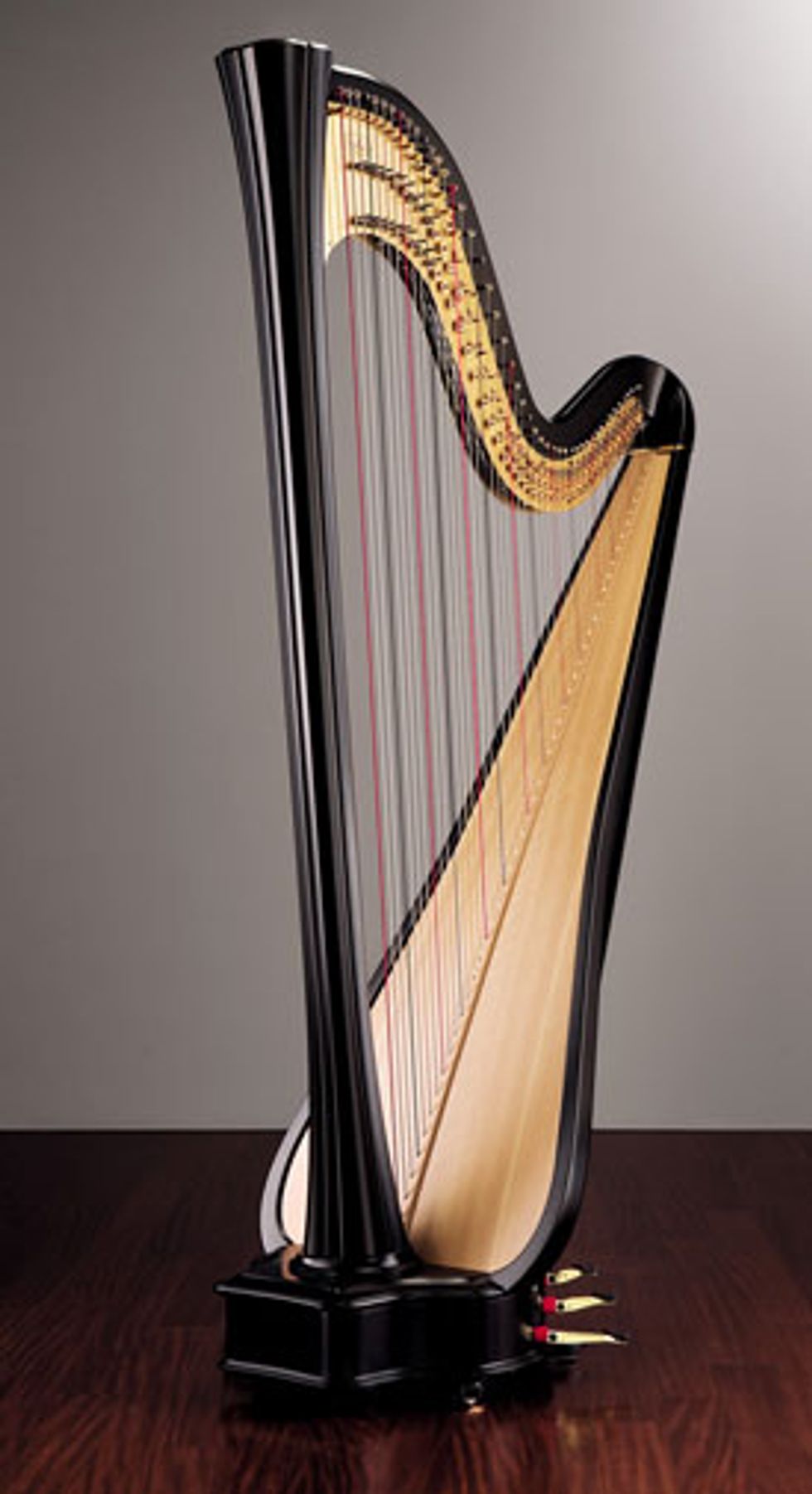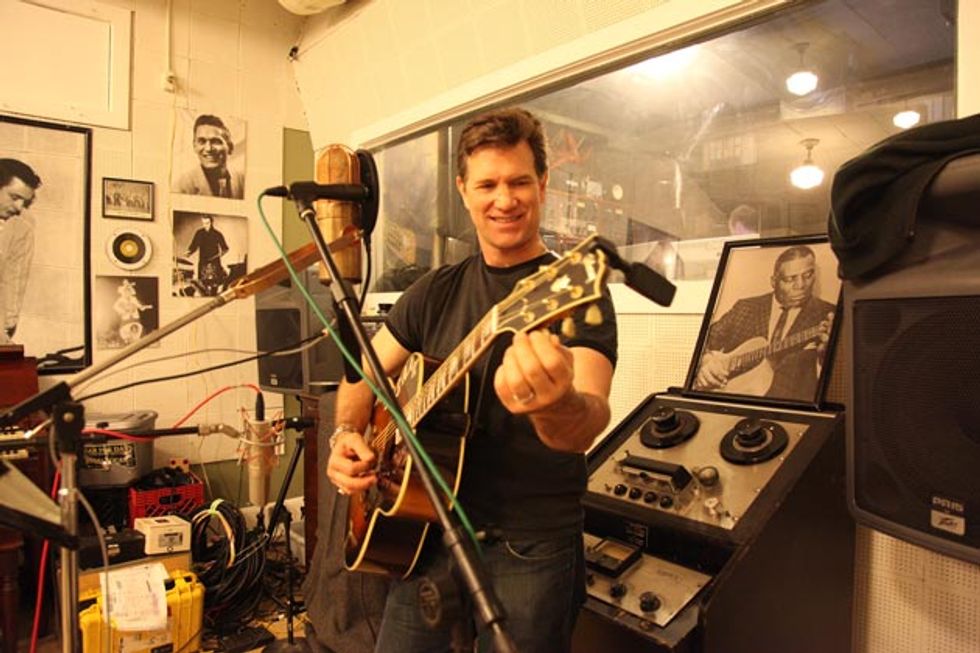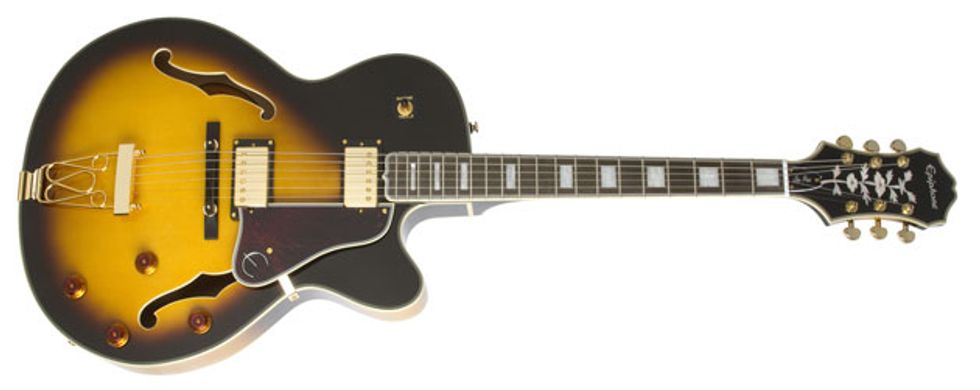Chris Isaak—the pompadoured crooner of hits like “Wicked Game” and “Baby Did a Bad Bad Thing”—used to come into a vintage guitar store where I worked. He would look at a guitar’s price and joke, “For that much money, I don’t want to play it—I want to drive it!” These instruments were between $5,000 and $15,000. Though Isaak was still a bargain hunter, he’d achieved considerable commercial success and wasn’t what you’d call a cheapskate. But his thinking reflected that of countless players of the time.
And this was well before the incredible rise in quality control and bang-for-buck value we’ve seen in both American and imported guitars over the last decade or so. Back then you really didn’t need a guitar that cost as much as a car—and you definitely don’t now. Many great players get gigs with top acts—from Paul McCartney to Nine Inch Nails—playing quality instruments that don’t even come close to maxing-out a $5,000 credit card.
The truth is, when it comes to buying instruments, electric guitarists are spoiled—especially compared to players of many other instruments. Granted, we have to purchase at least one amp, and most of us will also use pedals or rack effects. But even if you go a little nuts at your local guitar shop and spend 10 grand on a reliable touring rig, it’s nothing compared to how much, say, a symphony orchestra harpist has to plunk down for her dream instrument.
down for her dream instrument.
“I paid $25,000 for my harp in 2001. The same model purchased new today would be $37,000,” says Allegra Lilly, principal harpist for the St. Louis Symphony. “You could easily get a great concert grand for $20,000–$25,000, though I would guess that the most popular model goes for $33,000.”
Or suppose you played double bass. Freelance classical bassist Ali Cook says she paid $17k for hers. “Colleagues of mine have basses that range from $10,000 to $50,000. Once we, hopefully, win a permanent [symphonic] position, we would generally upgrade to an instrument that could cost up to $200,000.”
If you play traditional jazz guitar, you might pay as much as $30,000 for a custom instrument like a Benedetto. Yet you could just as easily gig with an Eastman, Ibanez, Godin, Epiphone, or Gretsch archtop and come in at under a grand. It’s interesting, though, that new instruments for traditional jazz players are the ones that reach into the range of those earmarked for classical players.

Classical bassists might use a double bass ranging from $20,000 to $50,000, but those playing permanently in an orchestra would likely spend more than $200k on a premier instrument. Photo by Andrew Kepert.
Not necessarily. More likely it’s because they have no choice. A high-end jazz box has more in common with a violin than with a Telecaster. The relationship between archtops and classical instruments becomes apparent when you hear Cook describe why symphonic quality instruments are so pricey—and why orchestral players need them.
“The instruments are acoustic, so the wood used, the measurements, and even the varnish can affect the resulting sound,” she explains. “They can takes months or longer to make.” A similar construction process is used to make a hand-built archtop guitar, and explains why they too can be so costly.
More expensive instruments offer sonic advantages as well. “When you’re auditioning for one spot in an orchestra against dozens of competitors, having an instrument that projects sound half as far as the next guy’s can seriously hurt your chances,” Cook continues. “Everyone’s technique and musicality being equal, the quality of instrument has noticeable advantages.”
Jazz guitarists who use amplifiers don’t have to worry about projection, but many traditional players work with transparent amps, often at relatively low volume where the acoustic properties of the guitar are audible. But traditional jazz guitarists also resemble classical players in that they can ply their craft with a single instrument, whereas guitarists engaged in popular music usually need a variety of axes to be competitive.
A traditional jazz guitarist might pay as much as $30,000 for a custom instrument—yet they could just as easily gig with a guitar under a grand, like a Joe Pass Epiphone Emperor II. Are classical and jazz musicians dedicated to their craft in some deeper way than pop musicians, and thus willing to spend more money for their instrument?
That last bit may sound like a story we tell our significant others, but it is nevertheless true: Most working guitarists need both humbucking and single-coil models, and often a quality acoustic as well, not to mention backup instruments for each type. Even with relatively inexpensive models, costs can add up.
Still, let’s do the math for a bare minimum typical rig a pro guitarist might need to be properly equipped for most gigs:
- Fender American Standard Stratocaster $1,199.99
- Gibson Les Paul Standard $2,999.00
- Martin D-18 $2,199.00
- Vox AC-30 $ 999.99
- Ibanez Tube Screamer $ 99.99
- Line 6 DL4 $ 249.99
- Total (not including tax and/or shipping) $7,747.96
We could add another guitar or amp, or an additional pedal or two (or five) and still be under the cost of the cheapest professional double bass.
So what are we complaining about? Walter Carter, who worked with famed vintage dealer George Gruhn for years and now owns Carter Vintage Guitars, wonders. “Musicians have never had any money, so an instrument of high quality has always been high-priced relative to a musician’s income,” he says. “But there are good quality utility instruments now that are cheaper than they have ever been. A Les Paul was $250 in the ’50s. You can get a copy now for not much more, and the real thing for $2,500. New cars were under $2,000 in the ’50s, and they are over $20,000 now. That ratio makes guitars a better deal now than they ever were.”
What about the costly vintage instruments Carter sells? “Most guitar players are not willing to spend collectable prices for working instruments because they will put wear on it and decrease the value by playing them, though they may use a high-end guitar in the studio,” he notes.
a variety of axes to be competitive.
According to Carter, Nashville studio players favor reliability over vintage appeal and tend to employ newer instruments in the $1,000 to $2,500 range. “The higher-end vintage guitars go mostly to collectors and wealthy musicians,” he says.
The player who purchases a guitar in the classical instrument price range for use on gigs is rare, but not unheard of. Take Joe Bonamassa—while he might not consider himself wealthy, he travels with three vintage Les Pauls whose worth must easily top five figures each—maybe even six. Of those instruments he has said, “They have a certain feel to them, and a clarity that makes you play better. There is that scorching high end that is not too bright. The pickups have only a little more output than a Strat, which helps the clarity.” Bonamassa also recently purchased a 1956 Fender Strat in a custom cream color from Carter for around $50,000.
Before you gasp and clutch your heart, consider this web post by violin luthier Kevin Lee, in which he explains what kind of violin you get in various price ranges. One post section is labeled: $6,000-$50,000: The beginning of professional instruments. (Yes, the price goes up exponentially from here), and one bit of advice he offers is, “There are many symphonies that will not accept your application unless you are playing a violin worth at least $15,000, many much higher, no matter how good you or your instrument may sound.”

This student model pedal harp by Salvi Harps costs $19,400, while elite harp models cost
upwards of $100k.
I think we can all agree that Bonamassa is as dedicated to his career and music as the typical symphonic violinist, and is far from scuffling. In fact, it would be hard to imagine he earns less than a symphony musician, whose pay can range from $28,000 to a maximum of $115,000 a year (2010 estimates from Berklee College of Music). So it makes perfect sense that, like them, he invests in instruments that help him perform at the highest level. Still, while not all of us can afford a ’59 Les Paul, the good news is that we don’t have to.
As Carter says, good guitars have gotten cheaper. I recently played an Epiphone Les Paul Standard Plustop Pro, which streets for under $500. This instrument went well beyond “good”—I would be happy doing any gig or session with it. For that matter, I have gone toe-to-toe with a fine guitarist playing a real Gibson Les Paul through a Marshall stack (total cost $5,000 or more), while I played a Danelectro Pro reissue through a Fender Hot Rod Deluxe (total cost around $1,000) and held my own sonically—not because I’m so amazing (I’m not), but because that inexpensive equipment sounds so darn good.
On top of everything else, popular guitar tone is much more subjective than classical tone. Pawnshop prizes like Harmony, Silvertone, and Teisco guitars increasingly appear in the hands of professional players tired of traditional Fender and Gibson sounds. We are lucky to live in an age when good guitars are cheap and cheap guitars are considered good.
So how spoiled and lucky are we? Just ask a concert string player who has taken out the equivalent of a student loan to buy a single instrument. Think about that the next time you balk at the price of a guitar. Consider whether this is the instrument that will help you be all you can be as a player, and then ponder how much achieving that goal is worth to you. Finally, be very grateful you don’t play concert harp.













![Rig Rundown: Russian Circles’ Mike Sullivan [2025]](https://www.premierguitar.com/media-library/youtube.jpg?id=62303631&width=1245&height=700&quality=70&coordinates=0%2C0%2C0%2C0)






